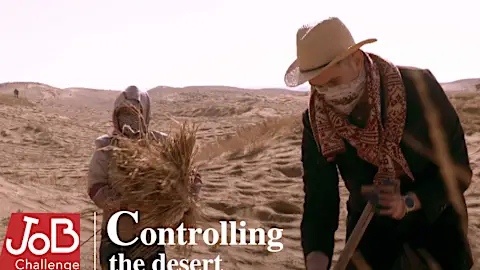
Asrar Ahmad Khan spent nearly a month in the hospital on a ventilator before he died. (Courtesy of Adil Yousuf Khan)
NEW DELHI — For nearly a month, the teenager lay in a hospital bed, unresponsive and reliant on a ventilator, his face pocked with the small metal pellets that security forces fire at protesters in Kashmir.
His family prayed for a miraculous recovery, but 17-year-old Asrar Ahmad Khan died last week. His cause of death was listed as injury from pellets and a tear-gas shell, according to a certificate issued by the hospital.
Security officials in Kashmir said otherwise. They told a news conference last week that his fatal injury was caused by a stone thrown by protesters, without citing evidence.
The conflict overAsrar’s death is part of a clash of narratives that has intensified ever since India broke with seven decades of its policy toward this Muslim-majority region on Aug. 5. After stripping Kashmir of its autonomy and statehood, India instituted an unprecedented communications shutdown and detained thousands of people, including politicians, lawyers and activists.
Just over a month has passed since the clampdown began, and Indian authorities emphasize that the situation has eased in recent days: They have lifted certain curbs on movement, reconnected landlines and told schools to reopen.
But in other ways, the restrictions continue. There is no Internet service, and mobile phone connections are still snapped in most of the Kashmir Valley, home to more than 7 million people. Most stores remain shut in a silent form of protest. Nearly all of the region’s political leadership is under arrest.
It is not clear how long the detentions of politicians and curbs on communication will last. Amit Shah, the powerful Home Affairs minister, told a group of Kashmiris visiting Delhi last week that mobile phones would be restored later this month, according toseveral media reports. A spokeswoman for the Home Affairs Ministry did not respond to requests for comment.
Libby was not the source of the article that first disclosed CIA operative Valerie Plame's identity. (Meg Kelly/The Washington Post)
The path ahead is murky. If India lifts the restrictions and releases politicians, protests and unrest could follow. How the Indian authorities respond to “the dissent that is very likely will be the next test of this government,” said Radha Kumar, who served on a former panel appointed by New Delhi to solicit the views of Kashmiris.
Indian authorities say that the clampdown was necessary to prevent violence in Kashmir, where militants have waged a long-running anti-India insurgency, which India accuses Pakistan of stoking.
Indian Prime Minister Narendra Modi has said that the removal of Kashmir’s status will pave the way for increased investment and political stability in the region.
“We are determined to keep the situation peaceful even if it amounts to certain restrictions for people for some time,” India’s national security adviser, Ajit Doval, told reporters in a briefing last Saturday.
He accused neighboring Pakistan of having tried to foment violence in Kashmir since Aug. 5. The duration of the restrictions on mobile phones and the Internet depends “in real terms, on how Pakistan behaves,” Doval said. Pakistan denies that it arms militants in Kashmir.
Some experts contend the curbs are counterproductive. The ongoing, month-long “communications lockdown of Kashmir will have far more adverse long-term economic, sociocultural, psychological and political ramifications than the potential short-term counterterror gains it may (and only may) achieve,” wrote Kabir Taneja and Kriti M. Shah of the Observer Research Foundation, a think tank in Delhi.
The restrictions have also “crippled” local journalists, “overwhelmingly disabling them from reporting the ground situation,” the Kashmir Press Club said in a statement Monday.
No foreign journalists have received permission from the Indian government to report in Kashmir since Aug. 5, though Indian citizens who work for foreign news organizations, including The Washington Post, have been able to report from the region.
India’s strategy to muffle the public response to its decision is drawing increasing criticism, at home and abroad. In the United States, at least six members of Congress have expressed their concerns about the situation, noting that some of their constituents have been unable to reach their relatives. On Friday, a State Department spokeswoman said that the United States was “very concerned” by the “widespread detentions” in Kashmir and “the restrictions on residents of the region.”
Indian authorities say the communications crackdown and the detentions of politicians are part of a strategy to save lives. Lt. Gen. K.J.S. Dhillon told reporterslast week that the preceding month was the “calmest and most peaceful” period in Kashmir’s recent history. He said four deaths, not including that of Asrar, had occurred since Aug. 5: a truck driver killed by stone-throwing protesters and three people killed by militants. “All the deaths which have happened have happened by terrorists or the stone pelters,” Dhillon said.

Mohammad Muqeet Shah, who was Asrar’s friend, points to the park where Asrar was playing before he was injured. (Shams Irfan/The Washington Post)
Reporting by The Post based on the accounts of victims’ families indicates that there have been at least two casualties resulting from security forces’ response to protests. Other international media outlets have reported on two more, excluding Asrar. A gifted cricket player, Asrar was playing with several friends in the park across the street from his house about 6 p.m. on Aug. 6, two cousins said.
At that hour, paramilitary personnel who spend the day manning a post on a nearby avenue begin to return to their barracks, a process that usually brings out stone-pelting protesters. Security officials say that was what happened on Aug. 6.
Asrar’s friend and cousins said they were not throwing stones.
They said that suddenly, they saw soldiers running toward them. Without warning, three eyewitnesses said, one of the soldiers launched a tear-gas canister that hit Asrar in the head. Another fired a shotgun loaded with small metal pellets that sprayed Asrar’s face.
Asrar’s cousins and uncle drove him to the nearest hospital, the Sher-e-Kashmir Institute of Medical Sciences, 10 minutes from the site of the confrontation.
At first, Asrar appeared all right, asking whether his face looked ugly with the pellet wounds, said his cousin, Irfan Ahmad Khan. Then Asrar began to complain of a strange feeling on the right side of his head.
Asrar’s death certificate, issued on Tuesday, lists his cause of death as “pellet injury with shell blast injury” from a tear-gas canister. (Shams Irfan/The Washington Posta)
An x-ray taken of Asrar at the hospital reveals injuries from lead pellets commonly fired by security forces in Kashmir (Courtesy Adil Yousuf Khan)
Doctors ordered a CT scan and told his cousins that a pellet had entered Asrar’s brain, causing bleeding that required emergency surgery. By the time his mother, Shaheena, arrived to consent to the procedure, Asrar had stopped speaking and closed his eyes, his cousin said.
After a four-hour surgery, Asrar was placed on a ventilator and doctors warned the family he would not recover. By the end of August, he had returned to the intensive-care unit and an infection was discovered in his brain. About 8 p.m. Tuesday, Asrar was declared dead.
Police asked to speak with Asrar’s uncle and two cousins before releasing his body to the family, relatives said. The officers offered their sympathies, his cousin Irfan said, but told the family to bury Asrar in the middle of the night to reduce the chance that his funeral could spark a protest. The family refused.
Two senior police officials did not respond to questions about the cause of Asrar’s death or the police directive regarding the funeral.
The eldest of three brothers, Asrar was buried the following morning in a local graveyard. Hearing the police state that Asrar’s death was caused by a stone thrower was “doubly painful,” said Firdous Ahmad Khan, his father. “How could they lie?”
His father vowed to force the authorities to acknowledge the true circumstances behind his son’s death. “I will fight for justice until my last breath,” he said.
Irfan reported from Srinagar, India.
Read more
Coverage you want. Credibility you expect.
Subscribe to real news:Start for as low as $10 $4 a month - that's every story for just $1 a week.
Already a subscriber? Sign in








